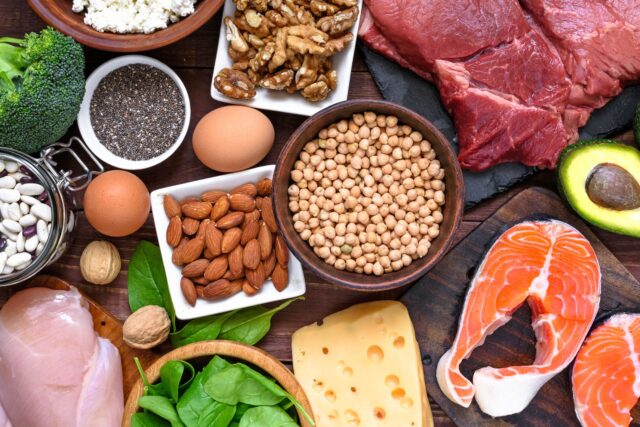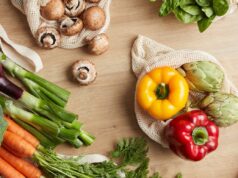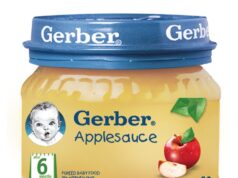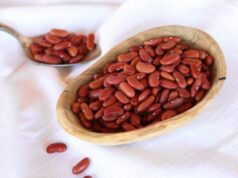Protein and amino acids are the building blocks of life. They play a crucial role in synthesizing all proteins, enzymes, and hormones that make up your body’s structure, function properly.
But not all protein sources contain complete protein – some need to be supplemented with food like legumes or meat products for their levels to meet recommended needs. What foods work as good sources of incomplete protein?
The “incomplete proteins examples” is a type of protein that doesn’t contain all of the essential amino acids. The most common incomplete proteins are soy, eggs, and milk.
These are protein sources that aren’t complete, and they include:
- Legume is a kind of legume (beans, peas, lentils)
- Nuts.
- Seeds.
- Grains that are whole.
- Vegetables.
Which foods, in light of this, have incomplete proteins?
There are several exceptions to the rule that animal protein is complete and plant protein is partial. “The basic rule is that animal foods, such as cattle, poultry, fish, turkey, pig, and dairy, are complete, while plant foods, such as nuts, seeds, rice, beans, and grains, are incomplete,” Wright explains.
Second, what foods contain all of the essential amino acids? A complete protein, also known as whole protein, is a meal that includes a sufficient amount of each of the nine essential amino acids that humans need. Red meat, chicken, fish, eggs, milk, cheese, and yogurt are examples of single-source complete proteins.
As a result, what are some imperfect protein examples?
Peanut butter on wheat bread, rice and beans, and split pea soup on corn bread are examples of these pairings. Plant-based incomplete proteins may be joined with tiny quantities of animal-based proteins to create a complete protein. Macaroni and cheese and tuna noodle casserole are two examples.
What does it mean to eat food that has all of the essential amino acids?
In a nutshell, this implies they contain all nine necessary amino acids needed for the body’s protein tissues to create and repair. Complete proteins are found in animal-based meals such as eggs, dairy, fish, and meat, while most plant-based diets are incomplete, meaning key amino acids are missing from the protein jigsaw.
Answers to Related Questions
Is it true that incomplete proteins help you gain muscle?
According to the most recent nutritional research, these incomplete proteins may really help you develop and retain muscle. Researchers have discovered that your body may use amino acids stored in its reserves to finish incomplete proteins.
Is peanut butter a protein that isn’t complete?
Complete proteins, such as those found in meat and other animal products, contain all of the necessary amino acids. Incomplete proteins, such as those found in beans, do not have this effect. Although peanut butter and bread are inadequate proteins on their own, they may be used to supplement other proteins.
Is it possible for the body to utilize incomplete proteins?
Is it really necessary to be concerned about whether you’re consuming full or partial proteins? The simple answer is probably not if you consume a varied and nutritious diet. To be clear, you must consume enough protein since your body need it to create muscle, transfer nutrients, and build and repair tissue.
Is it true that beans are an incomplete protein?
Beans are incomplete proteins because they are deficient in methionine, a crucial amino acid that the body uses to make protein. Methionine is abundant in cereal grains such as maize, rice, and wheat, but not in another amino acid present in beans.
How do you put incomplete proteins together?
Creating a full protein by combining partial proteins.
Nuts or seeds with whole grains are examples of combinations (peanut butter on whole wheat toast) Beans with whole grains (beans and rice; hummus and pita bread; bean-based chili and crackers; refried beans and tortillas)
Is broccoli a good source of complete protein?
Broccoli
A one-cup (91-gram) portion of raw chopped broccoli has 2.6 grams of protein, which includes all necessary amino acids. Folate, manganese, potassium, phosphorus, and vitamins C and K are also abundant (34). A 1-cup portion of broccoli provides just 31 calories for all of these nutrients.
What is the difference between a complete and an incomplete protein?
What is the difference between complete and incomplete proteins, and how important are them in your diet? Complete proteins are those that include all nine necessary amino acids, while incomplete proteins are those that lack one or more of them.
Is it true that cashews are a complete protein?
Cashews Are High In Protein
Cashews, like other nuts, are a great source of protein. Cashews provide 160 calories, 5 grams of protein, and 13 grams of fat (mostly heart-healthy monounsaturated fats) per ounce (approximately 16 to 18 nuts) (MacMillan, 2015).
Is tofu a protein that isn’t complete?
Is tofu considered a “complete” protein? Complete proteins are found in animal sources such as meat, fish, and dairy, while incomplete proteins are found in fruits, vegetables, and grains. Tofu, on the other hand, is an exception. It’s comprehensive, but it’s not as high-quality as animal sources.
Is Wheat a Good Source of Complete Protein?
All of the necessary amino acids are present in sufficient quantities in complete proteins. When grains and legumes are combined (for example, rice and beans or peanut butter on whole wheat toast), a complete protein is formed.
How does the body make use of incomplete proteins?
To ensure that your body receives all of the amino acids, eat a range of meals. Incomplete amino acids will be unused and will be eliminated by the body if they are not complete. How can the body make use of incomplete proteins? by mixing plant and animal meals in modest quantities, such as macaroni and cheese
Are almonds a full protein source?
The Protein in Nuts Isn’t of Good Quality
Nuts aren’t really good. Leucine is found in approximately 1.5 grams per 100 grams of almonds. Granted, if you consume 150 grams of nuts, you’ll get a good quantity of leucine (and around 35 grams of protein in total), but there’s another problem with nut protein.
Is whey an all-in-one protein?
Casein and whey are two proteins found in milk. Whey protein is obtained by separating casein from milk or as a by-product of cheese production. Because it includes all nine necessary amino acids, whey protein is called a complete protein. It doesn’t have a lot of lactose in it.
Is almond milk a good source of full protein?
Protein deficiency
Almond milk has just 1 gram of protein per cup (240 ml), compared to 8 and 7 grams in cow’s and soy milk, respectively ( 16 , 17 ). Beans, lentils, nuts, seeds, tofu, tempeh, and hemp seeds are among the high-protein dairy-free and plant-based foods.
Do all proteins have the same properties?
COMPOSITION OF PROTEINS
Are all protein sources created equal? They aren’t, no. Amino acids, in particular, are the small molecules involved in protein synthesis. There are a total of twenty amino acids, which are divided into two categories: essential amino acids and non-essential amino acids.
What is the nature of a protein?
Proteins are made up of hundreds or thousands of smaller components known as amino acids that are linked in lengthy chains. A protein is made up of 20 distinct kinds of amino acids that may be combined in various ways. Within cells and throughout the body, these proteins bind and transport atoms and tiny molecules.
Is pork a good source of complete protein?
Pork is a complete protein, meaning it contains all necessary amino acids in greater quantities than plant-based proteins. Pork in your meals makes you feel fuller for longer, which may help decrease post-meal glucose and insulin levels and aid weight reduction.
Is bread a good source of complete protein?
You can make a complete protein by mixing complementary proteins like grains like rice or bread with plant-based protein sources like peanuts, peanut butter, or beans. However, if you ate your bread with peanut butter, it would be a complete protein, meaning you would get all of the necessary amino acids in one meal.
How much protein do I need on a daily basis?
The majority of recognized nutrition organizations advise a moderate protein consumption. The DRI (Dietary Reference Intake) for protein is 0.8 grams per kilogram or 0.36 grams per pound of body weight. For the typical sedentary male, this equates to 56 grams per day.
The “incomplete protein combinations” are foods that contain less than 10% of the recommended daily amount of protein. They include vegetables, fruits, nuts and seeds.
Frequently Asked Questions
What foods contain incomplete proteins?
A: A few examples of foods that contain incomplete proteins are meat, eggs and milk.
Which food is a source of incomplete protein quizlet?
A: You have a choice of either beans or broccoli as a source of protein.
Are eggs an incomplete protein source?
A: Eggs are an incomplete protein source, meaning the amino acids they contain cannot be synthesized by your body. However, diets high in animal proteins often include dairy or plant-based sources of complete proteins like beans and quinoa which will provide all nine essential amino acids needed for health




